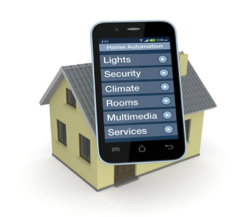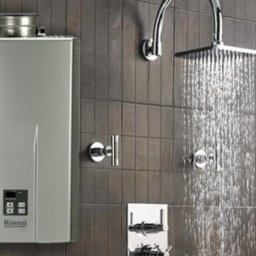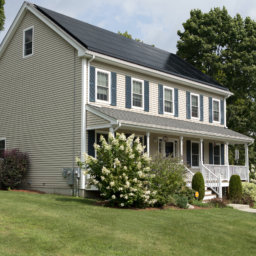If you are looking to make your home more sustainable, you might find yourself at a complete loss as to what the right first step would be. What would make the most impact, what is most cost-effective, and what can you do quickly?
But making your home a bit more green and eco-friendly doesn’t need to happen overnight, nor does it need to begin with the biggest projects possible. Even by making small changes, you can do a lot for the health of the planet and your family.
Here are our nine suggestions for a more sustainable home:
Choose Energy-Efficient Appliances
Before buying an appliance, check its energy rating. You want it to spend as little electricity as possible while also having the amount of power you need.
For example, don’t buy a less powerful blender just because it has a higher energy rating. You’ll end up using it more because it won’t blend your ingredients on the first go. Choose a model that balances your needs with energy efficiency. Consider how often you use the appliance, too. A washing machine, for example, should be as energy-efficient as possible, while a toaster or mixer can afford to spend a fraction more power.
Maintain Your Appliances
After you’ve purchased an energy-efficient appliance, you want it to last you as long as possible. You can prolong its life by cleaning it regularly, changing out any filters, and using it according to the manufacturer’s guidelines.
For example, if you regularly defrost your freezer, you can reduce its power consumption significantly. As there will be less ice buildup inside it, the compressor won’t have to work as hard. It will both last longer and use less electricity on a daily basis.
Choose Sustainable or Recycled Materials
When replacing a mattress or a piece of furniture, think about the cost of making it and how long it is likely to last. Choose items made from recycled materials whenever you can, or better yet, buy pre-loved items. You can restore a couch or desk with a bit of clever DIY, and it can last you another decade or two, especially if it was already made to last.
For example, buying a mattress without harmful materials will be better for your skin and lung health, and it will be good for the planet, too. You can also choose bedding made from sustainable materials, like bamboo, instead of the more popular cotton option.
Heat Up and Cool Down Naturally
A lot of energy is spent on cooling and heating our homes. Instead of relying on an appliance or heating system, upgrade your doors, windows, and insulation. It will be a costly project upfront, but you can end up saving significantly in the long run.
Invest in quality curtains or blinds that you can also use to block out the heat in the summer, or buy a revolving fan that can help move air around the space. Cozy up with a blanket and wear thicker items in the winter, and lower your thermostat by a degree or two.
Buy a Low-Flush Toilet or Adapt Yours
Another great way to make your home more sustainable is to reduce the amount of water you use to flush your toilet(s). You can do this by purchasing a low-flush toilet, but you can also fiddle with your existing toilet tank.
There is a flapper in the tank that determines when it will stop filling. By lowering it, you can fill only a part of your tank and thus use significantly less water for flushing. You may need to fiddle with the flapper until you find the amount of water that works for your household.
Make a Conscious Effort to Use Less Water
Instead of installing a low-flow showerhead or swapping out your sinks, you can consciously use less water. Don’t let the water run while you’re brushing your teeth. Turn it off while soaping your hands or while applying a facial cleanser.
Essentially, don’t let the water run unless you really need it. Get a basin for dishwashing if you don’t have a dishwasher, multitask in the shower, and think before you reach for a tap.
Swap Out All Light Bulbs
Energy-efficient light bulbs are a simple and very effective way to make your home more sustainable. They will provide just as much quality light as the regular kind at a fraction of the cost and power usage.
Don’t forget about the lights you rarely use, like the ones in the garage or on the porch. Think about your reading lamps, too, as well as any other light source in the home. Try to rely on natural light as much as possible, even after you install your energy-saving light bulbs.
Clean Green
Use eco-friendly and sustainable cleaning products in the home and garden. You’d be surprised how much you can clean with just the help of baking soda and vinegar. Alone or in combination, they can get rid of practically anything, from odors to limescale.
Eliminating chemical cleaners from your home will also be good for your health. It may take you a bit more time to get your weekly cleaning done, but the money you save will be worth the extra time.
Start Composting and Recycling
If you aren’t already, make more of an effort to recycle everything that you would otherwise throw out. Try to reduce the amount of things that end up in your waste bin. Glass, plastic, and paper are easy to separate, and you can also set up a home composting bin.
Even if you live in an apartment, you can still create one that won’t smell or make your home a mess. It will significantly help you reduce waste and make your home more sustainable.
Wrapping Up
Making your home more sustainable starts with your conscious choice to make a difference. Take a look at your house and habits and start pinpointing the little changes you can make. Even if it’s just swapping your current toothbrush for a bamboo one or buying solid shampoo instead of the kind that comes in a plastic container.
Photo by Precious Plastic Melbourne on Unsplash
















